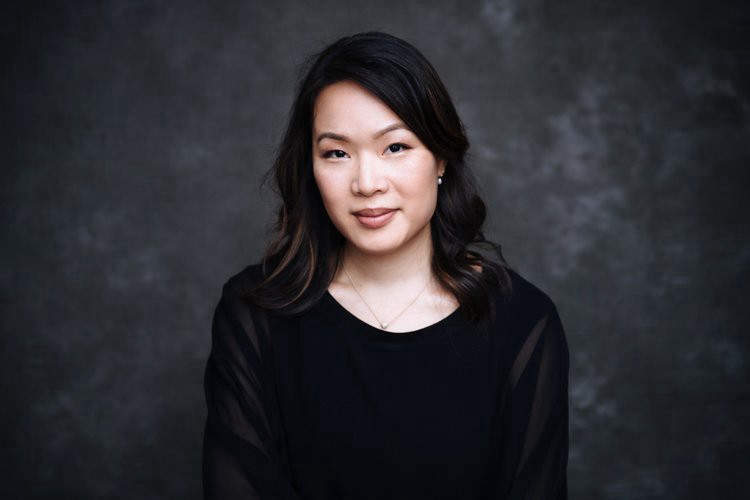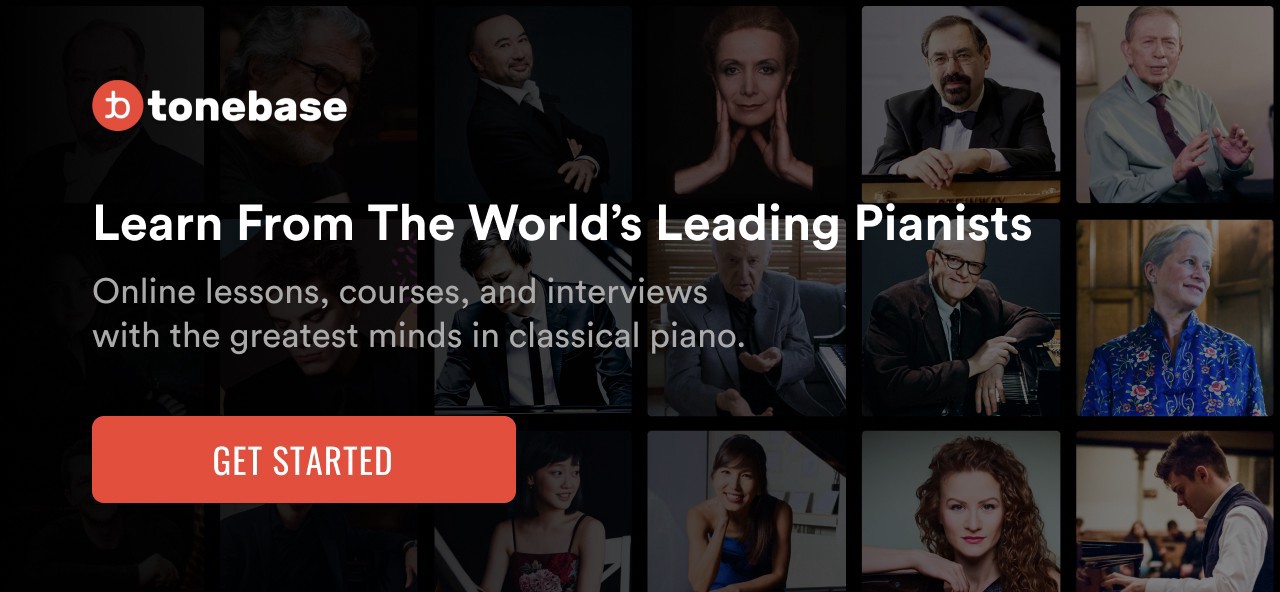
Thanks for checking out the tonebase Piano Blog! For more insights from world-class pianists, head over to tonebase.co and use the code PNO-BLOG to get $30 off any Premium subscription. Now, back to the blog?
It?s tempting, when one sees a very talented pianist, to go all Maybelline and think, ?Maybe she?s born with it,? ?it? in this case being lightning fast octaves, a cavernous sound, or the ability to memorize hours of Rzewski.
The same is true for sight reading. It?s easy to think that some people are just better at it.
Hogwash.
I?m telling you right now that you can improve at sight reading piano music. I?m also telling you that the well-intentioned advice to just ?practice it more? is not the whole story. It?s not about clocking in the hours.
Think about it ? every elite pianist has spent years learning new repertoire, and yet there can exist a big disparity between how quickly any two of them might learn.
To improve your sight-reading skill, like any other complex skill, you must practice it purposefully.
It?s not easy, but it is rewarding. Getting better at sight reading is like becoming fluent in a new language. For spoken languages, you have to improve your mastery in multiple areas: pronunciation, grammar, vocabulary, and idioms, for example.
Gaining fluency in music is the same challenge ? there?s lots to master. It?s a long game, but one that will greatly shorten the runway between you picking up a new piece of music and you making it your own.
Here are a few tips for the journey.
Choose the right tempo.
First, I have to make a distinction between ?sight reading for learning? and ?sight reading for survival? (a distinction I learned from the brilliant Noam Sivan).
Survival, for example, is when you?re reading a contemporary opera reduction for a last-minute run-through for a world-famous mezzo-soprano before she hops across the street to the Metropolitan Opera to sing her role. In that case, play whatever damn tempo she wants.
Now, as my heart rate decelerates from that memory, let?s talk about sight reading for learning, the goal of which is to actually get to know the piece. What?s the right tempo for that?
It is the speed at which you can play the music with a consistent, steady pulse. No slowing down!! No speeding up!! That pace could be one measure at a time, with one note every 15 seconds ? that?s okay (as long as it?s still a steady tempo)!
Once you know how your piece is situated in time, you can easily speed it up. Most people feel the need to go too fast and both miss things and distort the meter, at which point you?re no longer playing the piece as it was written.
Remember, there is no tiger (or singer) threatening you.
In my experience, choice of pulse is one of the biggest determinants of whether people will read a passage successfully. To keep yourself honest, count off one full measure before you start, subdividing that pulse into smaller note values if necessary to slow you down.
Clump. In Layers.
The best sight readers, like the best musicians, see music in patterns or clusters or groupings, from small to big.
How big? Well, Schenkerian music theorists can distill an entire symphony movement down to three notes, so you?ve definitely got some options.
Let?s be specific. As the first tip suggests, the most fundamental layer is rhythm. Since piano music often contains a multitude of musical voices, you must first corral the chaos by coordinating them into rhythmic patterns.
If you don?t fully grasp the rhythms at a glance, your first task is to tap out the rhythms (one hand at a time, if necessary) away from the keyboard. Only once you?ve got the rhythmic layer under control can you add others.
Another powerful layer is harmony. Most of the music you will read (so-called common practice music) is readily distillable into this or that chord or progression, but even (good) modern music is built on discernible compositional principles.
To focus on the harmony layer, try reading the bass line first, adding the highest or melody line second, and filling in the rest of the texture last.
If you?re not yet up for instant harmonic analysis, you can start with fluency in different keys. Drill the key signatures, pentascales, full scales, arpeggios, and triads of every key, making them familiar at a glance so you?re never again thinking note by note.
There are other layers you can add as you get more advanced. Being able to quickly identify phrase lengths, cadence types, sequences, or motivic transformations can help you ?get? whole passages instantly.
But, you say, that sounds like a lot of time studying the score! Yes, yes it is.
Just like most people read too fast, most people don?t look at the score long enough before they start. Take your lead from those pianists who don?t even approach the piano until they understand the whole score in their head! Try playing 20% slower than you think you need and studying the music 20% longer than you think you need before you start.
See with your hands, not your eyes.
Are you a looker? By that I mean, do you have to look at your hands to make sure they are on the right keys? If so, your fluency will likely suffer as your eyes constantly flit between the score and your keyboard (perhaps without even realizing it!).
Instead, train yourself to maintain visual continuity with the page as much as possible.
Activities to try (from less to more silly) include having a friend cover the keyboard with a folder while you play, or getting one of those barbershop/superhero/Dracula capes and taping the ends up to the music stand of your piano, covering your hands.
For all pianists, lookers or not, the more you train your hands to find their way, the better. This means getting familiar with arpeggio or chord shapes. It means being able to find intervals by feel. Put your eyeballs in your hands, and use hand shapes to shortcut the material.
One of my teachers used to put down the fallboard and tell me to play the music on it to see how well I knew the topography of the piece. This also breaks your reliance on whether something ?sounds? right and helps you keep the pulse (see tip #1, above).
Use Graded Material for Best Results
Remember what I said about purposeful practice? Sure, you could just grab a random book of repertoire off your shelf and go at it, but unless that happens to be exactly your level and exactly what you need, it?s not necessarily the best use of your time.
Luckily, there are lots of sight reading books out there, designed to help even the most beginner pianists progress systematically.
The books might start from reading in a five-finger position, to reading within an octave span, to reading two-voice counterpoint, to reading chordal textures. You get the point. The key is to identify what layers or clumps you need to work on, and then tackle them purposefully.
I?ve taught this series by Paul Harris, but the Four-Star series and the Faber series are also popular. Especially if you?re at a higher level, ask a teacher for recommendations.
With purposeful practice, there?s no need to hack at sight reading for hours a day. Practice smarter, not harder.
Keep a checklist of the layers you?re paying attention to, and see how you can improve those a bit at a time. Before you start reading, consult that checklist and make sure you?ve thought through those elements in the score.
Your sight reading prowess will grow stronger, and soon I guarantee it won?t matter whether you were born with it or worked smart to build it.
tonebase gives you instant access to knowledge from the world?s greatest guitarists, performers and educators. Use the code PNO-BLOG to get $30 off any Premium subscription at https://tonebase.co

Pianist JULIANA HAN is an active collaborator, chamber musician, and soloist, lauded not only for her thoughtful and inspired performances but also for her musical lectures, which have introduced classical works to diverse audiences. She has performed in New York?s major venues, including Carnegie Hall, Alice Tully Hall, and Merkin Hall, as well as in other notable venues across North America and Asia. Her festival appearances include the Music Academy of the West, Norfolk Chamber Music Festival, and Kneisel Hall Chamber Music Festival. She is co-founder and co-artistic director of the Piedmont Chamber Music Festival, an annual summer festival in the Bay Area featuring internationally-renowned performers. Previously Adjunct Faculty at the Juilliard School, where she received her doctorate, Dr. Han joined the faculty of Augustana College in 2018 as Assistant Professor of Piano. In addition to her doctorate from Juilliard, she also holds degrees in biochemistry and law, both from Harvard University, and has worked as a biotech specialist at L.E.K. Consulting and as a corporate attorney at Cravath, Swaine & Moore.



